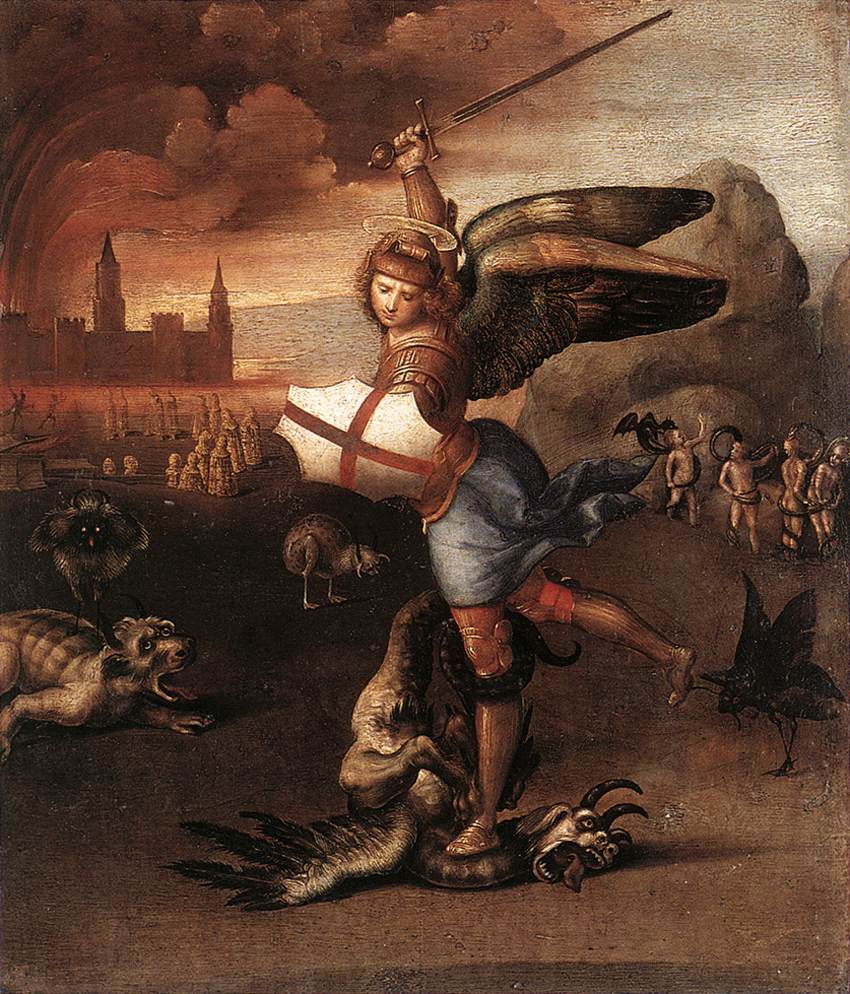- St. Michael (Raphael)
Infobox Painting|

title=St. Michael
artist=Raphael
year=c.1505
type=Oil on wood
height=31
width=27
city=Paris
museum=Louvre "St. Michael" is a painting by the Italian
High Renaissance painterRaphael (c. 1505). It is housed in theLouvre inParis .In a bleak landscape with the silhouette of a burning city in the distance,
St. Michael has just forced the Devil to the ground and is about to kill him with a blow from his sword. The monsters crawling out from all sides are reminiscent of those created by Hieronymus Bosch, while the figures in the centre recall those from theInferno of Dante's epic poem the "Divine Comedy ". On the left are the hypocrites in leaden coats, condemned to follow their torturous path, while on the right are the thieves being tormented by serpents.The St. Michael and St. George in the
Louvre , and the St. George of theNational Gallery of Art in Washington are bound together both by their subject - an armed youth fighting a dragon - and by stylistic elements. All three are assigned to the Florentine period and echo those stimuli which Raphael received from the great masters who worked in Florence or whose paintings were visible there. The influence ofLeonardo - whose fighting warriors from the "Battle of Anghiari" (1505 ) in the Palazzo della Signoria provided an extraordinary example of martial art (the painting deteriorated very rapidly because of shortcomings in Leonardo's experimental technique and so is no longer visible) - predominates in these works. But references to Flemish painting suggest the environment ofUrbino , where Northern influences were still quite vivid.Raphael's imagination which is particularly developed in the details of the St. Michael, is more balanced in the figure of the
Archangel , the focus of the entire composition. This sense of balance and composure is developed further in the other two panels, where the landscape, still of Umbrian derivation, accentuates the serenity of the figures, notwithstanding the dramatic character of the subject. These small panels are indicative of a moment in which the painter gathers the stylistic fruits of what he has assimilated so far and, at the same time, poses pictorial problems which will be developed in the future.
Wikimedia Foundation. 2010.
